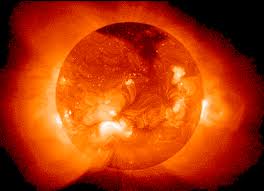When talking to Steve Cowley one is aware that you are in the presence of a great mind. Steve is one of the world’s leading scientists and is the CEO of the UK Atomic Energy Authority, Professor of Physics at Imperial College London and Head of the EURATOM / CCFE Fusion Association – the Culham Centre for Fusion Energy (CCFE) in Oxfordshire, UK. Just digesting all that I am sure you get my point: Steve is one smart guy!
 The work being done at CCFE and on the Joint European Torus (JET) specifically, contributes to what Steve believes might be the most important of all scientific quests – the quest for commercial energy from fusion. Given the need for the planet to have a clean, safe and sustainable energy source, fusion represents the very core of future survival. It is that serious. It is that important.
The work being done at CCFE and on the Joint European Torus (JET) specifically, contributes to what Steve believes might be the most important of all scientific quests – the quest for commercial energy from fusion. Given the need for the planet to have a clean, safe and sustainable energy source, fusion represents the very core of future survival. It is that serious. It is that important.
Nuclear fusion is the same process used by the sun and other stars in powering our solar system. The challenge that Steve and his scientist are working on can be described as how best to replicate the sun on earth. In a fusion reaction, energy is produced when light atoms are fused together to form heavier atoms.
A tour of the fusion plant and hearing about how it all works was admittedly above my pay grade and had me wishing I had paid more attention during my high school science classes. Although to be honest, even if I had paid more attention, I am sure that my comprehension would still have fallen desperately short of what was required! Putting on the appearance that I was assimilating all the information left me with a pounding headache and a frown that held my brow captive for several hours after the tour and conversation with Steve. To be honest, I don’t think I fooled anyone, but I digress.
There are some startling facts about fusion such as the need to heat the gasses used to 150million degrees Celsius (that represents 10x the core temperature of the Sun). Then there the incredible sustainability it could mean when it comes to energy output: the same amount of lithium as in your laptop battery, together with less than half a bathtub of water, could produce enough fusion fuel to supply the total energy needs of the average person living in Europe 30 years. Nuclear fusion can be a long-term energy source to complement other low-carbon options such as fission, wind, solar and hydro. It represents an efficient way to produce energy with no atmospheric pollution or long-lived radioactive waste and is inherently safe.
However, besides these attention grabbing insights, what stood out for me was how Steve framed what they are doing as a quest – as something bigger than the here and now; as something that only our children would fully realize the benefits of. That is big picture thinking; that is vision! It is a contemporary version of ‘building a cathedral’. Steve said that the end goal, the potential benefits of fusion were understood at the beginning but that the difficulty of what it would take was not understood. This he said was, “a good thing” as had the full extend of the challenge facing them been understood at the outset, it might well have had a negative impact on what was to follow.
Smart leaders understand the ‘quest’ that they are leading towards. It is a pity that in the short-term thinking and focus that dominates today’s landscape, ‘quest thinking’ is rare. The science of understanding human motivation points to the reality that we all like to feel that we are doing something meaningful; that we are contributing to something that is ‘bigger than ourselves’ – that is the territory of the quest. The leader who is able to understand this, express it and live it, is the kind of leader we need as we hurtle into an uncompromising and uncertain future.
So, what is your quest?
Perhaps a more revealing question is then to ask, ‘so how is what you are doing in the here and now contributing towards what was your answer to the former question’?


Trackbacks/Pingbacks